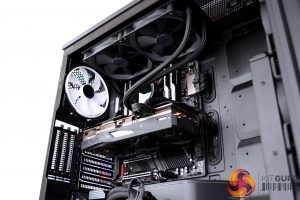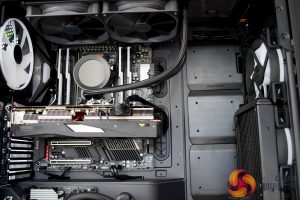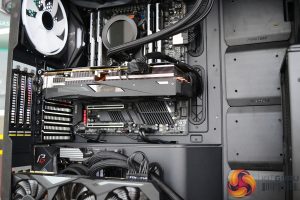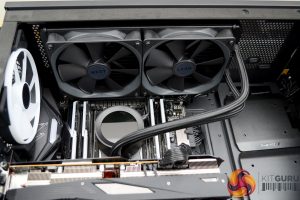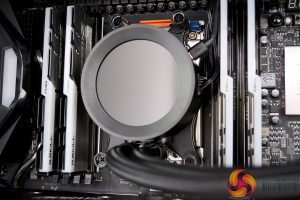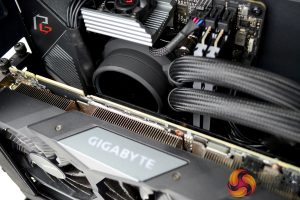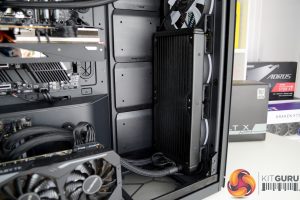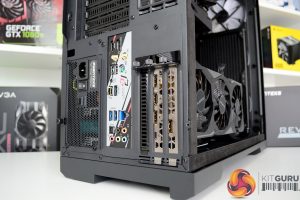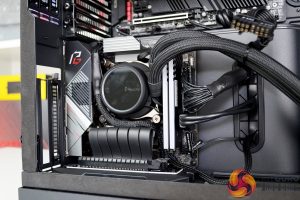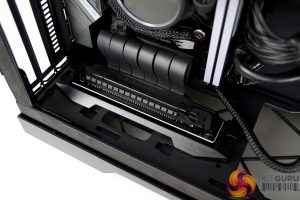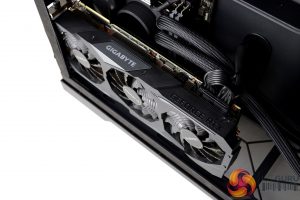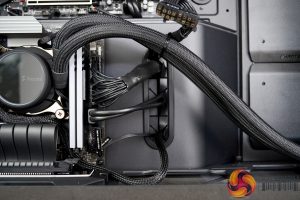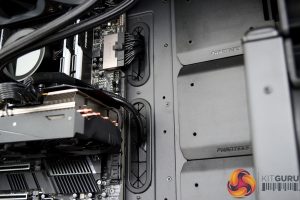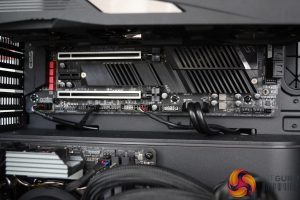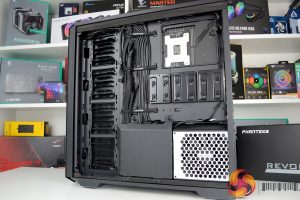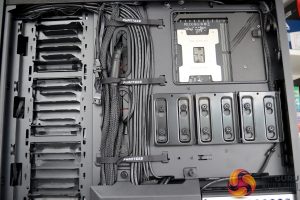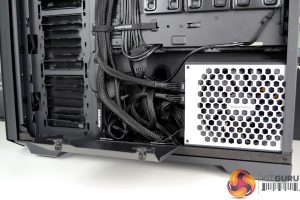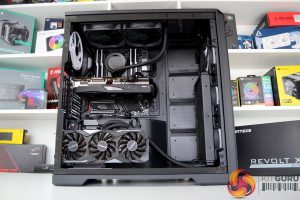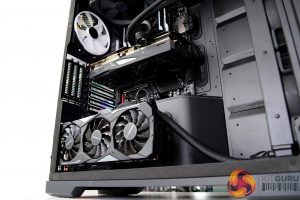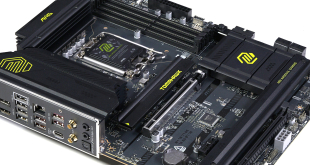Since the Phanteks Enthoo Pro II is designed to house two systems inside a single chassis, the best way to find any limitations with the case is to build a dual system inside. That is exactly what we will do, with a high-end desktop AMD Ryzen Threadripper build as the primary system in the top half of the case, accompanied by a mid-high end Intel Core i7-10700K mini-ITX gaming system in the compartment below.
Inside the top section of the case is enough space for the installation of E-ATX motherboard which is the form factor chosen for our primary system build. Manoeuvring the motherboard into position is easy since there is plenty of space to the right-hand side, at the top of the case and a healthy gap to the PSU shroud.
The Installation of long graphics cards is also catered for in the top section of the case, up to a whopping 475mm GPU can be installed inside the case with 25mm thick fans installed in the front panel. With this much space available, our 290mm Long Aorus RX 5700 XT was a breeze to install. If the side SSD covers are populated with drives, maximum GPU length is reduced to 345mm which is still a very generous space.
With so many radiator mounting options available in the Enthoo Pro II, a full custom water cooling loop should be easy to install inside. However, we have chosen two separate 280mm closed Loop liquid coolers, one for each CPU. Up top is a 280mm NZXT Kraken Z63 which fits with room to spare, so using tall memory modules shouldn’t be an issue with a top-mounted radiator.
To cool the Intel Core i7-10700K CPU in the secondary system, a Fractal Design Celsius+ S28 Prisma closed-loop AIO cooler is used. Again, this is a 280mm unit which fits into this position without problems. Using a 280mm AIO in the front panel does restrict access to the side-mounted SSD covers and means another radiator cannot be installed in place of the SSD covers either.
Mounting the mini-ITX motherboard of the secondary system requires screwing four standoffs into the PSU shroud and swapping out the metal panel at the rear of the case for the mini-ITX cover. The motherboard then mounts to the PSU shroud in a vertical orientation and allows a graphics card to be installed vertically too.
Phanteks provide a vertical GPU mounting bracket with the case, however, the PCIe riser cable must be purchased separately. There are three PCIe slots available for the secondary system, we had to use the outermost two slots for our graphics card to allow space for the CPU AIO cooler. This pushes the graphics card very close to the side panel and possibly will choke airflow to the card.
Handling the cable management of both systems also went better than initially expected, the large cable cutout in the PSU shroud was perfect for threading all the cables through and looked quite neat.
Cable cut-outs for the top system are also positioned just right to hide PCIe, 24-pin and EPS cables. Also, the two cut-outs on top of the power supply came in handy for routing front panel USB and Audio cables, However, rubber grommets on these cut-outs would be beneficial.
Likewise, in the right-hand side of the case, cables are easy to manage. The main cable management channel down the centre allows almost all the front I/O panel and system power cables to be routed. The generous amount of pre-installed Velcro straps means only a few zip ties are required which makes the end product look very neat.
The integrated power supply shroud is also very spacious which means slotting the PSU into position is a stress-free task. The addition of a flap to cover all the excess cables is a great idea and does its job very well, even with the additional cables of this dual system setup.
Building a dual system inside the Phanteks Enthoo Pro II was an absolute breeze and went much better than I was expecting. Phanteks has thought of everything with the Enthoo Pro II. Users have so many options and the case can be utilised for different scenarios with the support for dual systems, dual power supplies or a storage configuration that offers huge capacity for SSDs and HDDs.
 KitGuru KitGuru.net – Tech News | Hardware News | Hardware Reviews | IOS | Mobile | Gaming | Graphics Cards
KitGuru KitGuru.net – Tech News | Hardware News | Hardware Reviews | IOS | Mobile | Gaming | Graphics Cards


